Lea Wait's Blog, page 93
March 23, 2022
The Dogs of War. Are Family.
THE DOGS OF WAR …are family. This post is really a photo essay with links you can use to support animal rescue operations and refugee pet owners.
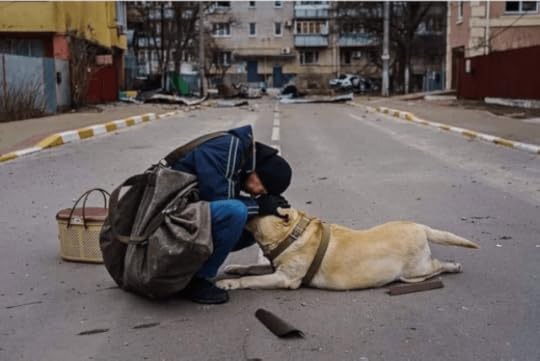
Photo credit: Marcus Yam, L. A. Times
Sandra Neily here: Every time, I see a picture of Ukraine’s fleeing children (like here), I think of my two young granddaughters and my own daughter and everything aches. Just aches.
I think of my two young granddaughters and my own daughter and everything aches. Just aches.
But every time I look at Raven (my rescued dog) I see the dogs of war.

Raven
When I looked deeper for images of dogs and the war, I was overcome.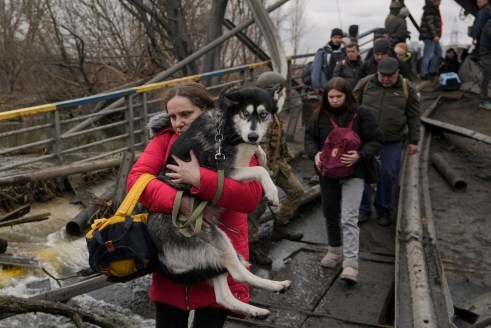 This picture of a husky being carried over a stream as the owner balanced on a narrow plank told me I had to do something.
This picture of a husky being carried over a stream as the owner balanced on a narrow plank told me I had to do something.

This post is mainly a photo essay, with links you can use to support animal rescue operations and refugee pet owners. Many small groups and organizations are doing most of the work, partnered up with larger organizations that have donation structures and websites in place.
Please share this post.What’s Going On?
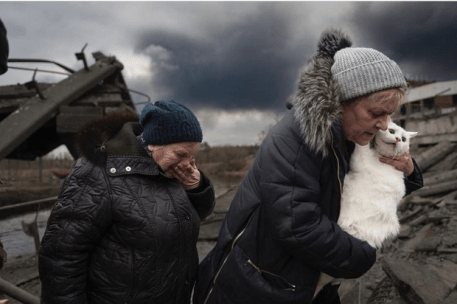

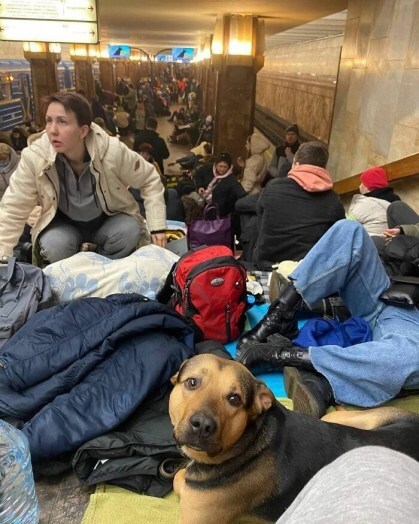

There are good Samaritans in Ukraine who take dogs off the streets and also untie them at train and bus station platforms where they’ve been left by desperate owners who could not board with pets. Owners often clip notes and cell phone numbers to collars, hoping to someday see their pets again or tell someone the name of a beloved dog, hoping it will find a good home.

a Ukraine vet comforts a wounded dog.
There are veterinarians still working in bombed cities. Many refuse to leave.

A rescue van returning with dogs and cats.
There are thousands and thousands of dogs and cats that make it out, either with owners carrying them, or by rescue services that operate vans crossing into Ukraine to find and save animals. ADA is one of those special groups in Poland and a recent donation allowed ADA to buy and equip another animal rescue van. (Volunteers work around the clock to staff these vans.)
And then there are the left behind pets … even when owners do not want to leave them. The streets and fields are full of strays. When the Russians capture territory, they shoot them. In many areas Ukraine teams go into buildings and apartments looking to save abandoned animals.
Marcus Yam of the L.A. Times took this picture and explained it later in an interview. 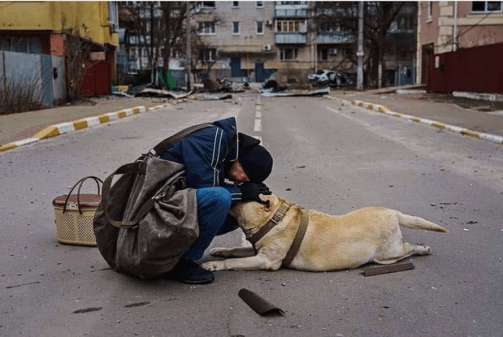 This man had tried to flee from Mariupol, but, paralyzed by the bombing, his terrified dog refused to move. Refused to walk. His owner, knelt and calmed his dog, telling him it was all going to be OK and then walked him back to his home, to familiar surroundings … and left him. I cannot imagine.
This man had tried to flee from Mariupol, but, paralyzed by the bombing, his terrified dog refused to move. Refused to walk. His owner, knelt and calmed his dog, telling him it was all going to be OK and then walked him back to his home, to familiar surroundings … and left him. I cannot imagine.
Stray dogs who adopt Ukraine fighters bring light and moments of softness.
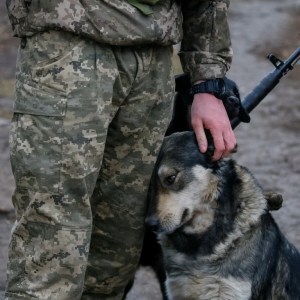

Red Tape. The EU was very slow to respond to refugees traveling with pets, 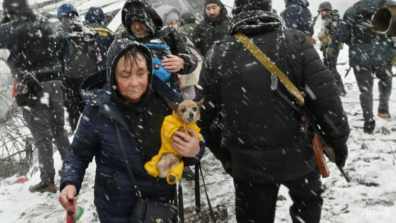 but it’s better now. Here’s a list of countries (EU and other) with revised and more humane refugee/pet entry procedures. Updates on the Situation for Animals in Ukraine – PETA UK
but it’s better now. Here’s a list of countries (EU and other) with revised and more humane refugee/pet entry procedures. Updates on the Situation for Animals in Ukraine – PETA UK
**********
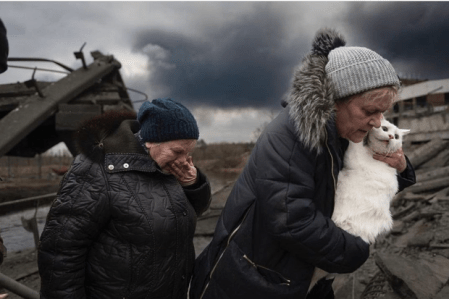
**************************
HELPING ORGANIZATIONS
Network For Animals (this link has donation info) When A Shelter Volunteer Saw The NFA Animal Ambulance Arrive In Ukraine Full Of Supplies, She Broke Down And Cried At The Side Of The Road… – Network For Animals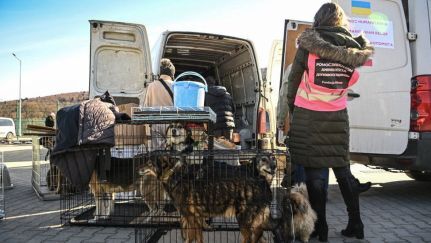
ADA is supported by the Network for Animals. ADA Foundation, run by Radek and Jakub, has been operating for 30 years in Przemysl, a Polish city near the border with Ukraine. …their priority now is to provide food and medical assistance to pets evacuated from Ukraine. This site has a good video of ADA’s work (see first item).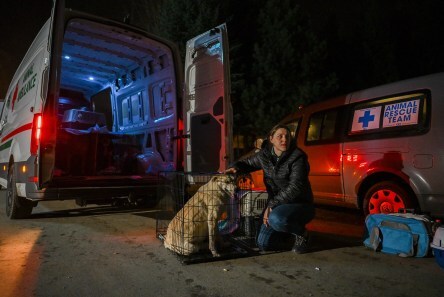
Humane Society International (HSI) is providing emergency supplies such as pet food and blankets, as well as veterinary care and funding for many refugees in need. Humane Society International (hsi.org)
Aid for Ukraine Animals – War Paws supports many smaller groups (listed), taking animals out and bringing food into Ukraine. There’s a serious (often desperate) need for pet food within the country.
The “Just Giving” site: Nick and Vanessa seem like the real deal: crowd sourcing and helping other groups buy materials they need, including animal evacuation vans (a recent one for ADA). The site has a good video showing their work. Crowdfunding to support the Ukrainian refugees (people & pets) on JustGiving
AWI Fundraises for Animals Impacted by War in Ukraine | Animal Welfare Institute (awionline.org)
This organization has a list of all groups helping animals that it has funded.
UAnimals is creating rescuing animals in Ukraine | Patreon This organization has daily updates/news on rescues (including zoo animals) and if you donate, you get even more news.

The eyes say so much.

The German Shepherd, Pulya, is being carried by Alisa’s husband, Dmytro as they walked the final stretch of the journey to Poland. She said, “Pulya is family”.


Thank you.
***************************************
 A smaller rescue note:
A smaller rescue note:
I did rescue my most recent dog, Raven. She spent two years in a crate and was used only for breeding. I wrote her a poem as sometimes when she bends into a wall to sleep, I am reminded of her history and give her an extra hug or run in the woods. It’s also a message that trauma is a deep thing.
“The Crate”
Raven is bending her head
into a hard corner of the living room.
The rest of her long, black, sleek body
lies relaxed on the floor.
She gazes at me with eyes almost as dark as her coat.
“This is the way I lay in my small crate before
I came to live with you
and love you. But I still need to feel the crate
at my neck. Sometimes.”
An author dog note. My mystery novels have a badly-behaved dog who was stolen from an abusive home and sent to live with the protagonist down a Maine dirt road. Early on, my agent said, “Now you can’t kill the dog. Readers love him so you’re stuck with him.” I wouldn’t have it any other way.
Sandy’s debut novel, “Deadly Trespass, A Mystery in Maine” won a national Mystery Writers of America award, was a finalist in the Women’s Fiction Writers Association “Rising Star” contest, and was a finalist for a Maine Literary Award. The second Mystery in Maine, “Deadly Turn,” was published in 2021. Her third “Deadly” is due out in 2022. Find her novels at all Shermans Books (Maine) and on Amazon. Find more info on Sandy’s website. 
March 22, 2022
If Mouse Trap Was Made Into a Movie
Thoughts by author Matt Cost on transforming his books into movies.
As I write this, I’m contemplating writing a screen play for Wolfe Trap, the first book in the Clay Wolfe/Port Essex PI series. Mind Trap was the second. Mouse Trap, publishing on April 13, is the third.
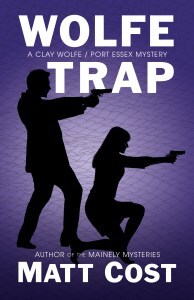
The characters would stay true all the way through, at least the regular good guys and gals that don’t get killed off. We’d have to bring in new villains, of course.
So, if Mouse Trap were made into a movie, Clay Wolfe would be played by Ryan Gosling. He’d be the perfect Wolfe, not so far from his role in The Nice Guys, the 2016 flick where he plays PI Holland March. Gosling would bring the right role of sarcastic, wry, and well-dressed and groomed PI trying to look rough around the edges. Clay Wolfe is a small-town fishing village boy who has been exposed to the city and finer things of life, and thus is a mixture of the two.

The role of Baylee Baker, Wolfe’s partner in the PI firm, would go to Anna Kendrick. She brings the right personality of caustic wit, intelligence, and caring. Mixing this in with her stunning good looks doesn’t hurt either, as does the fact that she was born in Maine, so this would be like coming home for her to do a film set in the fictional Maine town of Port Essex.

Wolfe’s best buddy is the ex-SEAL, Westy, who is a burly fisherman adept at kicking butt in any manner of ways. Mark Wahlberg would be the perfect actor to fill these shoes. If he’s good enough to be cast as Robert Parker’s Spenser, then he’s good enough to be the tough guy friend of Clay Wolfe. I think it’d be a lot of fun to have Gosling and Wahlberg play off of each other.
In book one, Wolfe Trap, Crystal Landry hires Clay Wolfe to find who was dealing the heroin that led to the death of her grandbaby. She is a former heroin user herself, rough as anything around the edges, and the salt of the earth. In book two, Mind Trap, she’s been hired as Wolfe and Baker’s receptionist. This role would be perfectly fitted to Taryn Manning, who was Tiffany “Pennsatucky” Doggett in Orange is the New Black.
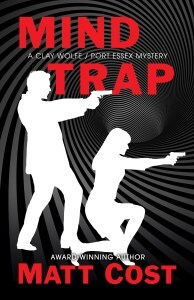
Joe Murphy is a former member of the IRA in Ireland who fled that country to become a clam digger for fifty years in Port Essex. He’s now retired and is a great source of information for Wolfe and Baker as he spends his days at the bar, giving him access to all of the town’s gossip and rumors and scandals. This has Joe Pesci written all over it. He, of course, would have to become Irish and lose the Italian, but hey, he’s an actor.
Another friend, and source of information, is the local newspaper editor, Marie Cloutier. I’m going to give this role to the author, Lori Rader-Day, for her big screen debut as an actress. I’d met Lori at Crime Bake in Boston prior to writing Wolfe Trap, and as I wrote about Cloutier, it was her image that I kept coming back to, so it must be fate. If we can lure her away from the keyboard, I think that Rader-Day would be a great fit for Marie Cloutier.
Clay Wolfe gives up being a homicide detective in Boston to move home and spend time with his Grandpops who raised him. Grandpops is a retired attorney, a silver fox, and is an absolute perfect fit for Donald Sutherland.

Throughout Mouse Trap, there is a lurking villain named Clive Miller, who likes to inflict pain upon people. He is not the one calling the shots and pulling the strings, but is the tool being used to carve out badness. I’m not going to cast the top-dog antagonist at this point to keep their identity secret until the last pages. Who better to play that role than the Joker, Joaquin Phoenix?
What a dream cast! It is every authors dream and worst fear to have a movie made from their book. Many film adaptations butcher the vision of the author, but I think with Shane Black as the director and Gosling, Kendrick, Wahlberg, Manning, Pesci, Rader-Day, Sutherland, and Phoenix on board, there’d be no way it could be wrong. I’m now waiting by my phone.
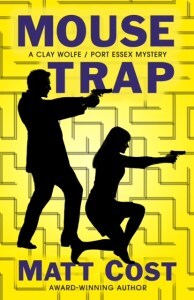
Write on.
Matt Cost is the highly acclaimed, award-winning author of the Mainely Mystery series. The first book, Mainely Power, was selected as the Maine Humanities Council Read ME fiction book of 2020. This was followed by Mainely Fear, Mainely Money, and Mainely Angst.
I Am Cuba: Fidel Castro and the Cuban Revolution was his first traditionally published novel. He had another historical released in August of 2021, Love in a Time of Hate.
Wolfe Trap and Mind Trap were the first two in the Clay Wolfe Port Essex Trap series. Mouse Trap is the third in this series.
Cost was a history major at Trinity College. He owned a mystery bookstore, a video store, and a gym, before serving a ten-year sentence as a junior high school teacher. In 2014 he was released and began writing. And that’s what he does. He writes histories and mysteries.
Cost now lives in Brunswick, Maine, with his wife, Harper. There are four grown children: Brittany, Pearson, Miranda, and Ryan. A chocolate Lab and a basset hound round out the mix. He now spends his days at the computer, writing.
March 20, 2022
Mysteries Set During Wartime
Given what’s happening in Ukraine, I thought I’d recommend a few novels set during a time of war.
Top on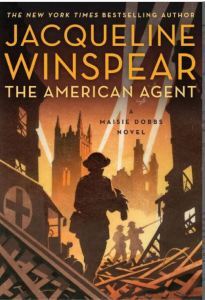 my list is Jacqueline Winspear’s “The America Agent”. In this story the intrepid Maisie Dobbs investigates the murder of Catherine Saxon, an American correspondent found murdered in her London apartment. As Germans rain death and destruction from the skies, Maisie risks her life to find out what happened to this spirited reporter she’d just met. In another wartime story an intrepid young photographer carries her dead lover’s final, world-shattering message into the heart of Berlin as Hitler ascends to power.
my list is Jacqueline Winspear’s “The America Agent”. In this story the intrepid Maisie Dobbs investigates the murder of Catherine Saxon, an American correspondent found murdered in her London apartment. As Germans rain death and destruction from the skies, Maisie risks her life to find out what happened to this spirited reporter she’d just met. In another wartime story an intrepid young photographer carries her dead lover’s final, world-shattering message into the heart of Berlin as Hitler ascends to power.
The very talented Winspear has won Agatha, Alex, 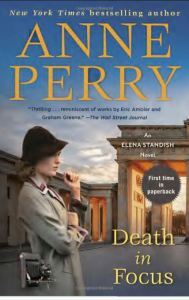 and Macavity awards and the first book in her Maisie Dobbs series was nominated for an Edgar Best Novel Award. I’d certainly recommend any book in her series.
and Macavity awards and the first book in her Maisie Dobbs series was nominated for an Edgar Best Novel Award. I’d certainly recommend any book in her series.
“Death in Focus” by Anne Perry is set against the rise of Nazi Germany and the beginning of WWII. An intrepid young photographer carries her dead lover’s final, world-shattering message into the heart of Berlin as Hitler ascends to power.The assassination of one of Hitler’s allies, espionage, double agents, and protagonist Elena’s terror of being hunted as a prime suspect make for pretty exciting reading.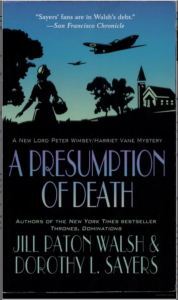
Finally, Dorothy Sayers’ beloved Lord Peter Winsey’s series, set in 1930’s England, ended just before the start of WWII. Lucky thing Jill Paton Walsh, the Booker Prize finalist found Sayers’ posthumous work, “The Wimsey Papers”, and expanded it into a complete novel. Walsh begins where Sayers left off in this spin-off series that explores the Wimseys’ wartime adventures. A Presumption of Death, the second of Walsh’s Wimsey books, follows sleuthing power couple Peter and Harriet as they investigate a young girl’s murder during the Blitz. Some readers can’t stand the extremely rich, eccentric, dilettante who solves mysteries for his own amusement. Wimsey, is an archetype for the British gentleman detective, but I rather like him, along with Bunter, his astoundingly creative and loyal manservant.
March 18, 2022
Weekend Update: March 19-20, 2022
Next week at Maine Crime Writers there will be posts by Charlene D’Avanzo (Monday), Matt Cost (Tuesday), Sandra Neily (Thursday) and Maureen Milliken (Friday).
In the news department, here’s what’s happening with some of us who blog regularly at Maine Crime Writers:
from Kaitlyn Dunnett: The large print edition of the fourth Deadly Edits mystery has just come out. Don’t you love the cover?
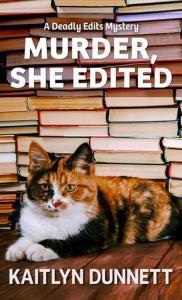
This is the one in which Mikki Lincoln inherits an abandoned farmhouse with the provision that she find and edit diaries left behind by the former owner. Calpurnia, her faithful cat, plays a major role in solving the mystery.
Maureen Milliken will be the guest of the Maine 2020 Reading Connection series at 7 p.m. Monday, March 21, via Zoom. Those who would like to attend should email Irene Drago at irenemdrago@gmail.com before noon Sunday, March 20, for the link.
The topic of the discussion will be the third book in Maureen’s mystery series, BAD NEWS TRAVELS FAST. When Appalachian Trail thru-hiker Lydia Manzo becomes lost in the woods of Franklin County, then is found dead, it sets off a chain of events that upsets the fragile peace of the town of Redimere. Maine’s northwestern High Peaks region can be a dark wilderness, but they suddenly seem very crowded as newspaper editor Bernadette “Bernie” O’Dea tries to discover what happend to Lydia and why Police Chief Pete Novotny has also disappeared.
Readers don’t have to have read the first two books, or even “BAD NEWS TRAVELS FAST to enjoy the discussion!
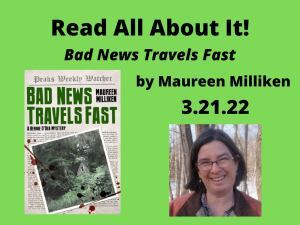
An invitation to readers of this blog: Do you have news relating to Maine, Crime, or Writing? We’d love to hear from you. Just comment below to share.
And a reminder: If your library, school, or organization is looking for a speaker, we are often available to talk about the writing process, research, where we get our ideas, and other mysteries of the business. We also do programs on Zoom. Contact Kate Flora
March 17, 2022
The Hero’s Journey (continued)
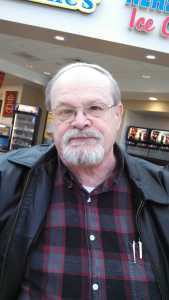
Vaughn C. Hardacker
In last month’s blog, I discussed the first part of Joseph Campbell’s Monomyth Model. I discussed the first of the three parts, (Act 1 which should be about 25% of the story) which Campbell labeled Departure. The second part he called Initiation (Act 2 which should be about 50% of the story) and the third, Return (the remaining 25%). I’ve seen this three-act model labeled as Act 1–Ordinary World, Act 2–Special World, and Act 3–Ordinary World. In short, the model can be described as:
Act I (Ordinary World or Departure) 25%: The hero exists before his/her present story begins, oblivious of the adventures to come. It’s his/her safe place. His/her everyday life is where we learn crucial details about our hero, his/her true nature, capabilities, and outlook on life. This anchors the hero as a human, just like you and me, making it easier for us to identify with him/her and, later, empathize with his/her plight.
The hero’s adventure begins when he/she receives a call to action, such as a direct threat to his/her safety, family, way of life, or the peace of the community in which his/her lives. It may not be as dramatic as a gunshot, but simply a phone call or conversation. Whatever the call is, and however it manifests itself, it ultimately disrupts the comfort of the Hero’s Ordinary World and presents a challenge or quest that must be undertaken.
Although the hero may be eager to accept the quest, his/her will have fears that need overcoming at this stage. Second thoughts or even deep personal doubts about whether or not he/she is up to the challenge. When this happens, the hero will refuse the call and, as a result, may suffer somehow. The problem he/she faces may seem too much to handle and the comfort of a home far more attractive than the perilous road ahead. This would also be our own response and once again helps us bond further with the reluctant hero.
At this crucial turning point where the hero desperately needs guidance, he/she meets a mentor figure who gives him/her something he/she needs. He/She could be given an object of great importance, insight into the dilemma he/she faces, wise advice, practical training, or even self-confidence. Whatever the mentor provides the hero with, it dispels his/her doubts and fears and gives him/her the strength and courage to begin his/her quest.
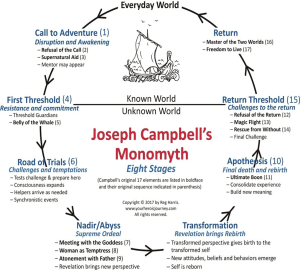 ACT II (Special World or Initiation) 50%: We have now arrived at Campbell’s fourth element: Initiation. The adventure finally begins. The hero now crosses the threshold and acts upon his/her adventure or quest. He/She may go willingly or be pushed. Once committed the hero enters the fifth element The Belly of The Whale. This element describes the rebirth the protagonist will experience once they cross the threshold. Instead of conquering or conciliating the power of the threshold, the protagonist is drawn into the unknown and in a sense died. However, rather than pull back the hero pushes forward…they are re-born.
ACT II (Special World or Initiation) 50%: We have now arrived at Campbell’s fourth element: Initiation. The adventure finally begins. The hero now crosses the threshold and acts upon his/her adventure or quest. He/She may go willingly or be pushed. Once committed the hero enters the fifth element The Belly of The Whale. This element describes the rebirth the protagonist will experience once they cross the threshold. Instead of conquering or conciliating the power of the threshold, the protagonist is drawn into the unknown and in a sense died. However, rather than pull back the hero pushes forward…they are re-born.
The hero then enters the sixth element, the Road of Trials. The hero is faced with any number of challenges and as he/she overcomes them they learn and their skills develop. Their consciousness expands and they will gain helpers as needed (think of Frodo’s trek in The Fellowship of The Ring). They will experience a number of synchronistic events. which lead to the Supreme Ordeal.
The Supreme Ordeal may be a dangerous physical test or a deep inner crisis that the hero must face in order to survive or for the world in which the hero lives to continue to exist. Whether it be facing his/her greatest fear (Indiana Jones descending into the pit of snakes to obtain the Ark of The Covenant) or most deadly foe (The Gray Man in Robert B. Parker’s Spenser novels), the hero must draw upon all of his/her skills and experiences gathered upon the Road of Trials in order to overcome his/her most difficult challenge.
Only through some form of “death” can the Hero be reborn, experiencing a metaphorical resurrection that somehow grants him greater power or insight necessary in order to fulfill his destiny or reach his journey’s end. This is the high point of the hero’s story and where everything he holds dear is put on the line. If he fails, he will either die, or life as he knows it will never be the same again.
In my next post, I will discuss the final elements of Act II. I have found that reviewing Campbell’s model has helped me immensely when I am stuck in the saggy middle of a story. Until then, chin up! You may not believe it today, but spring is coming!
———————-
March 16, 2022
Dream It, Then Do It
I’m in the throes of reviewing comments from my beta readers on Thea 11, Death Sends a Message, so today I offer a slightly tweaked version of a post from several years ago. The message is still the same. It is better to take some chances on the things you dream about than exit this world with them still only dreams. Your thoughts are appreciated.
Kate Flora: I begin with a confession. I stole this title from my mother. It comes from a 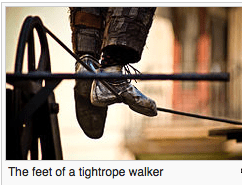 newspaper column she wrote years ago, when she used to do a weekly column called, “From the Orange Mailbox.” It was about identifying one’s dreams and then acting on them. It made such an impact on my childhood best friend, Karin, that she read it at mom’s memorial service. I come back to it from time to time when I find myself cowering under my desk or spinning in small, slow, unproductive circles. And because my mother was very brave and I admire bravery, I remind myself of her advice as I try to shove myself forward.
newspaper column she wrote years ago, when she used to do a weekly column called, “From the Orange Mailbox.” It was about identifying one’s dreams and then acting on them. It made such an impact on my childhood best friend, Karin, that she read it at mom’s memorial service. I come back to it from time to time when I find myself cowering under my desk or spinning in small, slow, unproductive circles. And because my mother was very brave and I admire bravery, I remind myself of her advice as I try to shove myself forward.
So I stole the title. And why not? It’s a good title. As we all know, there is no copyright in titles, imitation truly is often the sincerest form of flattery, and there is more right than wrong in heeding the advice of one’s mother. So here I go, reminding myself, and you, that while we’re all often too busy to THINK about the process of thinking and planning for the year(s) ahead, I encourage you to join me in considering what might change the shape of your writing or adventuring year.
Perhaps you’re saying, “Okay, but what do those tightrope walker’s feet have to do with this?” But you already know, don’t you. For most of us, taking chances on doing new things out of our normal comfort zone can be as scary as we imagine walking on a tightrope would be even if we were only a few feet off the ground. This is especially true about the things we dream. There’s a big risk involved in taking the steps to move from a dream, with all of its inherent possibilities, to the reality. Our steps may be clumsy. Our execution inept. Often we don’t even know how to start. But most of us learned to walk, and to read, and to drive a car, didn’t we?
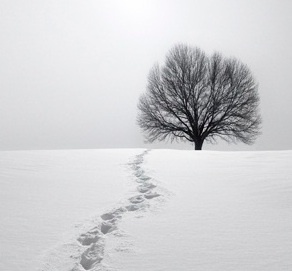
Sometimes it’s a lonely trudge but you keep on going
Because I teach and have done a lot of consulting for writers, I’ve watched a lot of people taking those first tentative steps toward being a writer. If you’ve always dreamed of being a writer, it can be truly scary to actually clear the desk and sit down to start writing. What if you can’t do it? What if you discover that writing is actually hard? Second confession: It is. What if the flowing sentences and stories you always imagined aren’t flowing? Third confession: We sometimes write for months to reach that amazing phase where things flow, but when they flow it is one of the world’s greatest highs. And it never would have happened if we hadn’t been in the chair, writing, when it hit. What if you discover that your first drafts read like “See Dick and Jane run?”
The truth is that realizing dreams isn’t easy. But looking ahead, ask yourself which is better, to exit this life having lived fully and taken some chances or to have held your dreams tightly in your fist and never risked finding out if they could be realized?
 When I was a kid, I was such an avid reader that I used to take twelve books out of the library every week. I’d read six on the weekend and the other six during the week. The library was my temple. Writers were amazing people. I was completely entranced by their ability to take me into another, imagined world and hold me there through the power of their storytelling. I haven’t changed much. I still find writers amazing and I’m still entranced when I pick up a book that keeps me from seeing “the bones” or analyzing what the writer is doing, a book that I don’t want to stop reading. After more than thirty-five years at the desk and with twenty-four books and numerous short stories on the shelf, I’m still excited about writers and writing.
When I was a kid, I was such an avid reader that I used to take twelve books out of the library every week. I’d read six on the weekend and the other six during the week. The library was my temple. Writers were amazing people. I was completely entranced by their ability to take me into another, imagined world and hold me there through the power of their storytelling. I haven’t changed much. I still find writers amazing and I’m still entranced when I pick up a book that keeps me from seeing “the bones” or analyzing what the writer is doing, a book that I don’t want to stop reading. After more than thirty-five years at the desk and with twenty-four books and numerous short stories on the shelf, I’m still excited about writers and writing.
Back in those library days, I dreamed of being a writer. I took that first tentative step toward my own writing when my second son was born. Wrote some books that still live in the drawer. Showing my work to others was scary. I collected enough rejection letters to paper my bathroom. But I kept at it and so can you, if you believe in your right to explore yourself as a writer.
Taking the chance of realizing that dream may not be easy. I was in the unpublished writer’s corner for eight years before I sold a book, and sustaining my faith and effort took most of my courage for a very long time. But lately I’ve been thinking that it’s time to start expanding the dream. I’ve been asking myself what else is important, what else do I want to try out? Do I want to write different things? Have different adventures? Learn new things to broaden my perspective and help me see the world differently? I’m finally old enough not to be embarrassed about trying to do things that I may not be good at. I sing like a crow, but sometime soon I’m going to hunt down someone who has compassion for crows and take singing lessons. You probably won’t find me sprawled sexily across a piano like Michelle Pfeiffer, as we age we have to be cautious about breaking our osteopenic bones, but I may yet croak with joy. I have bravely donned tap shoes and taken some lessons.
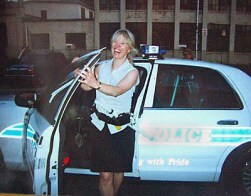
Research for writing the Joe Burgess series–me taking a citizen’s police academy. This is right after my nightstick got caught on a door handle and I slammed my nose into the door
I dream of writing a competent screenplay, despite the daunting nature of Final Draft. Of writing the books I’m scared to write. I dream of learning to take an interesting photograph where the people in it aren’t red-eyed, or blurred, or carefully centered by the type of photographer who once worried about coloring inside the lines. I’m trying to learn to color outside the lines. To stop putting myself into a box labeled Fragile. Do Not Open. Take No Chances.
So far, I’ve only managed to kick a few holes in the sides of the box, but light is getting in.
What have you always dreamed of? What are you afraid to do? What’s holding you back? What might change that? Let’s start thinking about some new adventures. Dream it? Sure. But then why not do it?
March 14, 2022
Beware the Ides of March
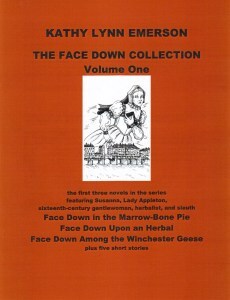 Kathy Lynn Emerson here, writing on March 15, 2022. Superstition claims March 15 is an unlucky day because the “ides” was the date Julius Caesar was assassinated. The quote comes from Shakespeare, and that isn’t surprising. From my research for writing numerous novels and short stories set in the sixteenth-century, it’s clear that Tudor England was an extremely superstitious place.
Kathy Lynn Emerson here, writing on March 15, 2022. Superstition claims March 15 is an unlucky day because the “ides” was the date Julius Caesar was assassinated. The quote comes from Shakespeare, and that isn’t surprising. From my research for writing numerous novels and short stories set in the sixteenth-century, it’s clear that Tudor England was an extremely superstitious place.
Almanacs were popular reading in Tudor England and contained lists of lucky and unlucky days. There was only one problem. Other than agreeing that Fridays were especially unlucky, no two almanac writers agreed on which dates to avoid if you were planning to get married or start a new business venture. There was, however, a general consensus that the age of sixty-three was particularly “fatal and climacterical.”
“Portents” were also greatly feared. These were natural phenomena interpreted as being signs of greater disasters to come. A comet, also called a “star with a long tail” and a “blazing star,” was seen as a harbinger of disaster, particularly the one in 1533, which was said to foretell the divorce of King Henry the Eighth. The comets that appeared over England in 1500, 1506, 1514, 1518, 1527, 1531, 1556, 1577, 1579, and 1596 weren’t linked to such a specific event, although the one in 1596 was blamed for the floods that occurred the same year.
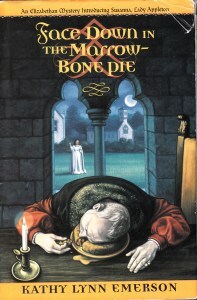
original cover with ghost
Earthquakes were popular fodder for superstitious interpretation. Notable ones occurred in 1571,1574, 1575, and 1580. Two days after the latter, a book about it was already being sold to report on the damage and speculate about the implications. One of the casualties was London’s George Inn, which was being converted into a playhouse. Puritans interpreted this as proof God disapproved of plays and players. It didn’t take much for them to turn current events into propaganda. In 1583, when scaffolding collapsed at a bear baiting, killing eight spectators, they claimed to see the hand of God in the accident.
There is an alleged ghost in the first book in my Face Down series (Face Down in the Marrow-Bone Pie). My amateur detective is a sixteenth-century gentlewoman, Susanna Appleton, an expert on poisonous herbs. Because of her expertise, superstitions about witchcraft and sorcery frequently crop up in the novels and short stories. Socially ostracized older women were particularly vulnerable to accusations that they’d bewitched their neighbors (or their neighbors’ cows). I’ve written about various aspects of the persecution of accused witches in the sixteenth century in three different novels, the romantic suspense Unquiet Hearts, the series mystery Face Down Under the Wych Elm, and the standalone mystery The Finder of Lost Things.
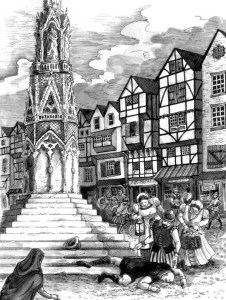 Although I treat the beliefs of the time seriously, since they play into characters’ motivations, I had a little fun with the idea of witches and curses when I created one of the continuing secondary characters in the series. Jennet, first Lady Appleton’s tiring maid and later her housekeeper (and her close confidante), in contrast to her rational-minded employer, is prey to just about every superstition prevalent in the Elizabethan era. This is most apparent in Face Down Beneath the Eleanor Cross, in which an old woman who is reputed to be a witch has cursed her. When Jennet is told by one of the other servants that she can divert the hex into an animal, she buys a cow that appears to be on its last legs, reasoning that when the cow dies, she will be free of the curse. Naturally, the cow thrives. This incident turned into a running gag and provided much needed comic relief in a novel in which my sleuth has been accused of murdering her husband and faces execution if she can’t find the real killer.
Although I treat the beliefs of the time seriously, since they play into characters’ motivations, I had a little fun with the idea of witches and curses when I created one of the continuing secondary characters in the series. Jennet, first Lady Appleton’s tiring maid and later her housekeeper (and her close confidante), in contrast to her rational-minded employer, is prey to just about every superstition prevalent in the Elizabethan era. This is most apparent in Face Down Beneath the Eleanor Cross, in which an old woman who is reputed to be a witch has cursed her. When Jennet is told by one of the other servants that she can divert the hex into an animal, she buys a cow that appears to be on its last legs, reasoning that when the cow dies, she will be free of the curse. Naturally, the cow thrives. This incident turned into a running gag and provided much needed comic relief in a novel in which my sleuth has been accused of murdering her husband and faces execution if she can’t find the real killer.
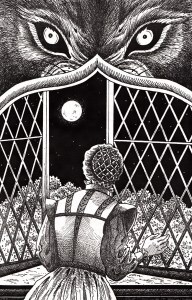 I’ve just finished compiling and publishing my three-volume e-book collection of all the novels and short stories in the Face Down series. Almanacs are key to the plot of “Encore for a Neck Verse.” Comets appear in “Much Ado About Murder.” An earthquake reveals a hidden body in “A Wondrous Violent Motion.” There is also my one “woo-woo” story, written to suggest another supernatural possibility in “Lady Appleton and the Creature of the Night.” My short stories have appeared in various magazines, anthologies, and collections, but they are all contained in the new collections. For more information and buy links, click here
I’ve just finished compiling and publishing my three-volume e-book collection of all the novels and short stories in the Face Down series. Almanacs are key to the plot of “Encore for a Neck Verse.” Comets appear in “Much Ado About Murder.” An earthquake reveals a hidden body in “A Wondrous Violent Motion.” There is also my one “woo-woo” story, written to suggest another supernatural possibility in “Lady Appleton and the Creature of the Night.” My short stories have appeared in various magazines, anthologies, and collections, but they are all contained in the new collections. For more information and buy links, click here
What about you, dear readers? Could ghosts (or were-creatures) be real? Do you avoid walking under ladders or stepping on cracks in the pavement? And how do you feel about black cats?

Kathy Lynn Emerson/Kaitlyn Dunnett has had sixty-four books traditionally published and has self published others, including several children’s books. She won the Agatha Award and was an Anthony and Macavity finalist for best mystery nonfiction of 2008 for How to Write Killer Historical Mysteries and was an Agatha Award finalist in 2015 in the best mystery short story category. She was the Malice Domestic Guest of Honor in 2014. Her most recent publications are The Valentine Veilleux Mysteries (a collection of three short stories and a novella, written as Kaitlyn) and I Kill People for a Living: A Collection of Essays by a Writer of Cozy Mysteries (written as Kathy). She maintains websites at www.KaitlynDunnett.com and www.KathyLynnEmerson.com. A third, at A Who’s Who of Tudor Women, is the gateway to over 2300 mini-biographies of sixteenth-century Englishwomen.
March 13, 2022
What I Did on My Vacation
I hope this will not seem like the proverbial student September essay. My husband and I recently escaped gray and frozen Maine for two weeks in Florida, aptly nicknamed the Sunshine State. We saw only a few clouds our entire stay. For most of time we were on Marco Island on the Gulf coast, our third stay there. We love the wide, powdery sand beach, and nearby are other places to visit.

One of my favorite things to do on the beach is watch people. As a writer, I count it as character study. I also like to watch the shore birds, but that’s just for my enjoyment. Every morning, along with many other people, we walked the beach before plopping down to enjoy the water and warmth.
On our treks, we passed flocks of royal terns (white bodies, black heads) and black skimmers (mostly black with orange and black bills) staking their patch of sand, each breed in its own group but near the other. Somewhat like humans, I suppose. They didn’t seem to mind our presence even when I stepped closer to take a photo—or two or three—except for the few interloper seagulls, who flapped and squawked their complaint at the intrusion.

The white ibises fascinated me. So elegant and distinctive. Their long, curved bills have sensitive hairs on the tips that sense tasty morsels in the sand.

Of course, there were entire clans beneath umbrellas and tents or stretched out in the sun and others frolicking in the surf and playing in the sand. The most interesting sand castle I ran across had either been left unfinished or designed to look like a ruin.

Along the shore, people fishing staked out their territory with stands in the water for their poles. This man was there every day. I saw him catch a large fish, which turned out to be a small shark. He carefully removed the hook and released it into the water. After that, he persisted, but I never saw him catch anything.

The seashells lining the beach meant tricky barefoot walking but enticed collectors of all types. Some came armed with buckets and baskets. Others were more casual. I didn’t conduct interrogations, but one woman told me she was looking for the tiniest intact shells she could find—just for something to do. My back ached in sympathy as she spent a long time bent over in her search for what looked like only a handful of shells. Gathered on our morning walks, we deemed these three as collectible.
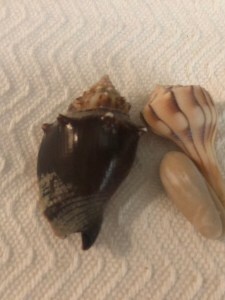
Florida is a wintering haven for burrowing owls. I’ve been a fan of owls and of burrowing owls specifically for ages. In past years we’ve seen roped-off burrows on the island, but never spotted an owl at one. Either we were too late and they’d abandoned the burrow after the owlets fledged or there were none at that burrow. Not this time. Up the street from our rental, the owls were active. This is the first time I’ve seen burrowing owls live. Adult birds are only about ten inches high. In this photo, the parent birds are on guard. And if you look closely, on the lower left, you can see their owlet, fully feathered and nearly ready to fledge. There might have been more than one, but I glimpsed only the one.
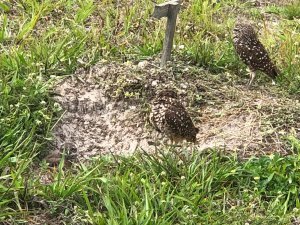
Another day, we drove to Naples to the Audubon Corkscrew Swamp Sanctuary, which we’d visited before, but is always worth the trip. The photos tell the story.

9 foot alligator with decorative leaves

wood storks & cypress knees
And I’ll leave you with a movie review. Marco Movies is unlike any other movie theater in my experience. It’s small, with cushy executive-type swivel chairs at tables and counters. A server took our order for drinks and popcorn and brought them promptly. Sorry the photo is so dim. It’s because they were about to start the film.

Marco Movies
We watched THE BATMAN in comfort, essential because the film is nearly three (yes, 3!) hours long. The plot was strong, the acting excellent, and the action and special effects riveting. But long! Did I say it was long? As an author and editor, I itched to pare down that script. Remember what Alfred Hitchcock said, “The length of a film should be directly related to the endurance of the human bladder,” about an hour and a half. Nevertheless, I do recommend the film.
Thank you so much for reading today’s post. I hope you enjoyed it. Primal Obsession will be free later this month for a limited time. For exact dates, follow me on Facebook or sign up for my newsletter at susanvaughan.com.
I’ll leave you with one of the spectacular Marco Island sunsets. If you have questions or recommendations for our next winter vacation, please comment!

March 11, 2022
Weekend Update: March 12-13,2022
 Next week at Maine Crime Writers there will be posts by Susan Vaughan (Monday), Kaitlyn Dunnett/Kathy Lynn Emerson (Tuesday), Kate Flora (Thursday) and Vaughn Hardacker (Friday).
Next week at Maine Crime Writers there will be posts by Susan Vaughan (Monday), Kaitlyn Dunnett/Kathy Lynn Emerson (Tuesday), Kate Flora (Thursday) and Vaughn Hardacker (Friday).
In the news department, here’s what’s happening with some of us who blog regularly at Maine Crime Writers:
from Kaitlyn Dunnett: Kensington Books, publisher of my Liss MacCrimmon and Deadly Edits mystery series, is sponsoring an auction to benefit Ukraine. Writers from many publishers have contributed items to auction off. For more information, go to https://www.kensingtonbooks.com/pages/benefitukraine/ The online auction will take place from March 17-23. All proceeds will go to Ukraine through the organization Direct Relief.
An invitation to readers of this blog: Do you have news relating to Maine, Crime, or Writing? We’d love to hear from you. Just comment below to share.
And a reminder: If your library, school, or organization is looking for a speaker, we are often available to talk about the writing process, research, where we get our ideas, and other mysteries of the business. We also do programs on Zoom. Contact Kate Flora
A reminder from the Maine Crime Writers
Hey readers! A reminder now that it’s getting warmer out, theoretically, to let your friends know about the Maine Crime Writers daily blog posts, Facebook page and our panels of authors, who are happy to appear at your local library. There’s never a bad time of year for mystery and crime writing and reading!
Lea Wait's Blog
- Lea Wait's profile
- 509 followers



